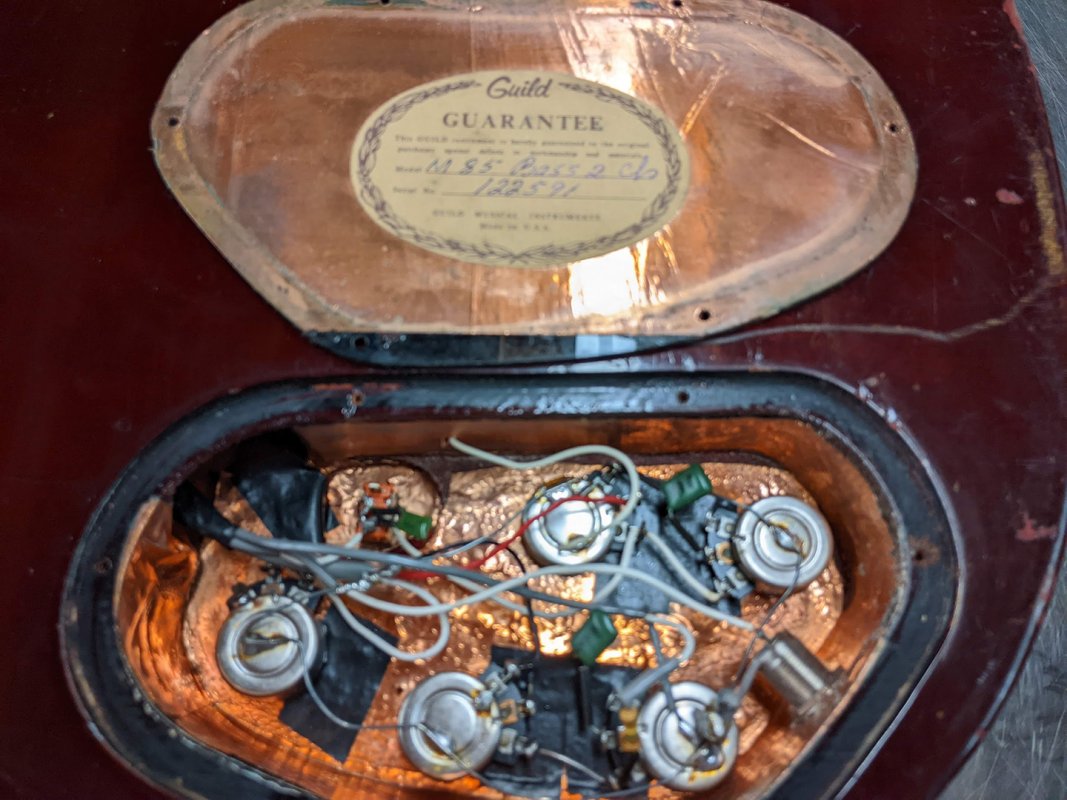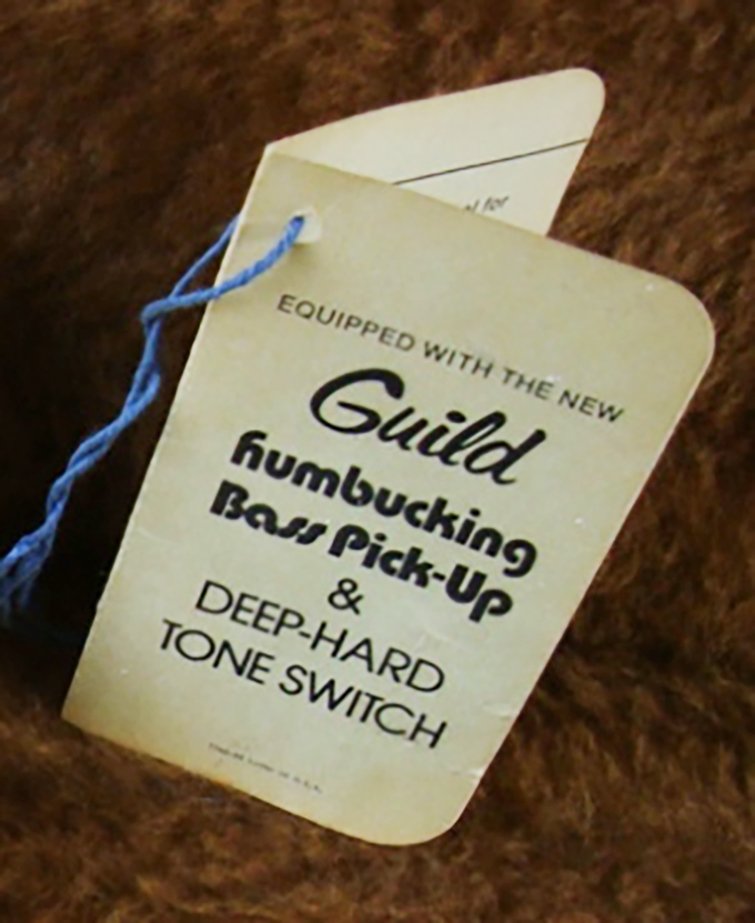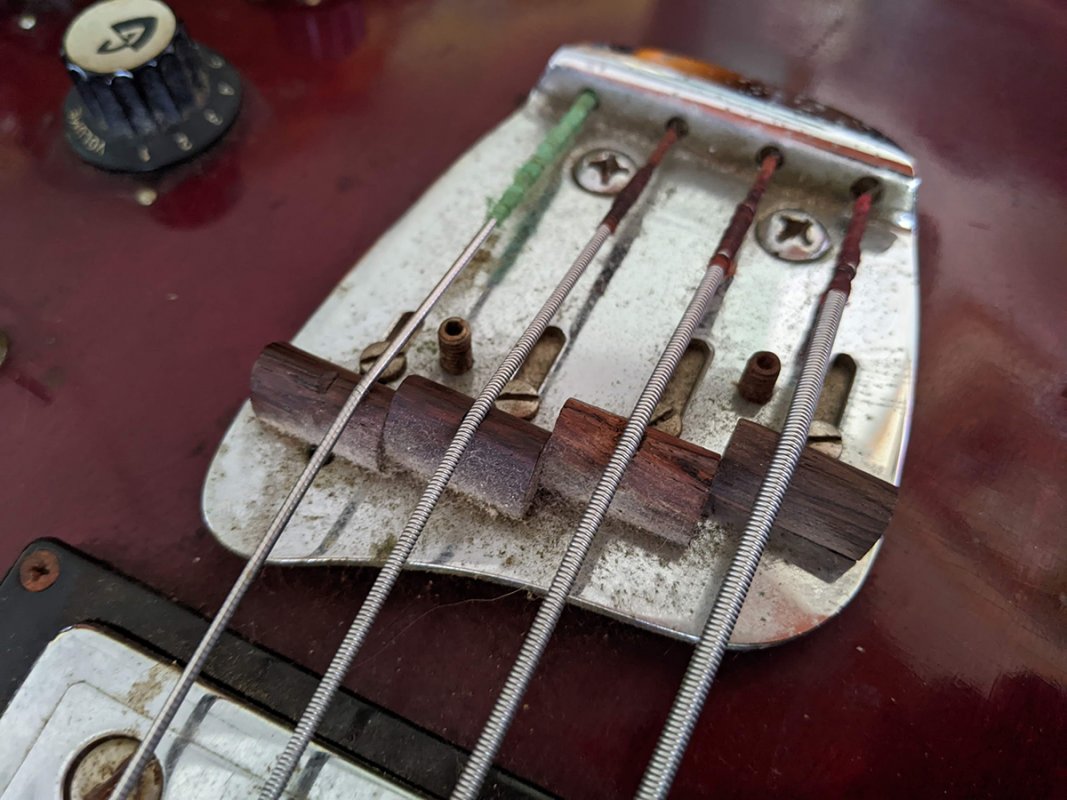I outed this bass earlier in the week, based on a handwritten card at a local grocery story, advertising a 1975 Guild M85 bass. I met the guy this morning and we made a deal. Now to figure out exactly what this is. By the serial number on the headstock - 12259 - it dates to 1960. Can that be right Hans? Other than that, it plays and sounds good to me. The guy said he had it checked out at a reputable local shop, and he said it was in good order. Dirty - yes. He did throw in a working amp - a Dean Markley K100B. The bass sounded pretty good through it. Finish is OK - aside from the initials JM scratched in. This has been played.
I'm no expert, but the crew here is, so have at it. Who knows, maybe I'll keep it and learn how to play bass? Lots more pics here:
Guild Bass Photos
Marty
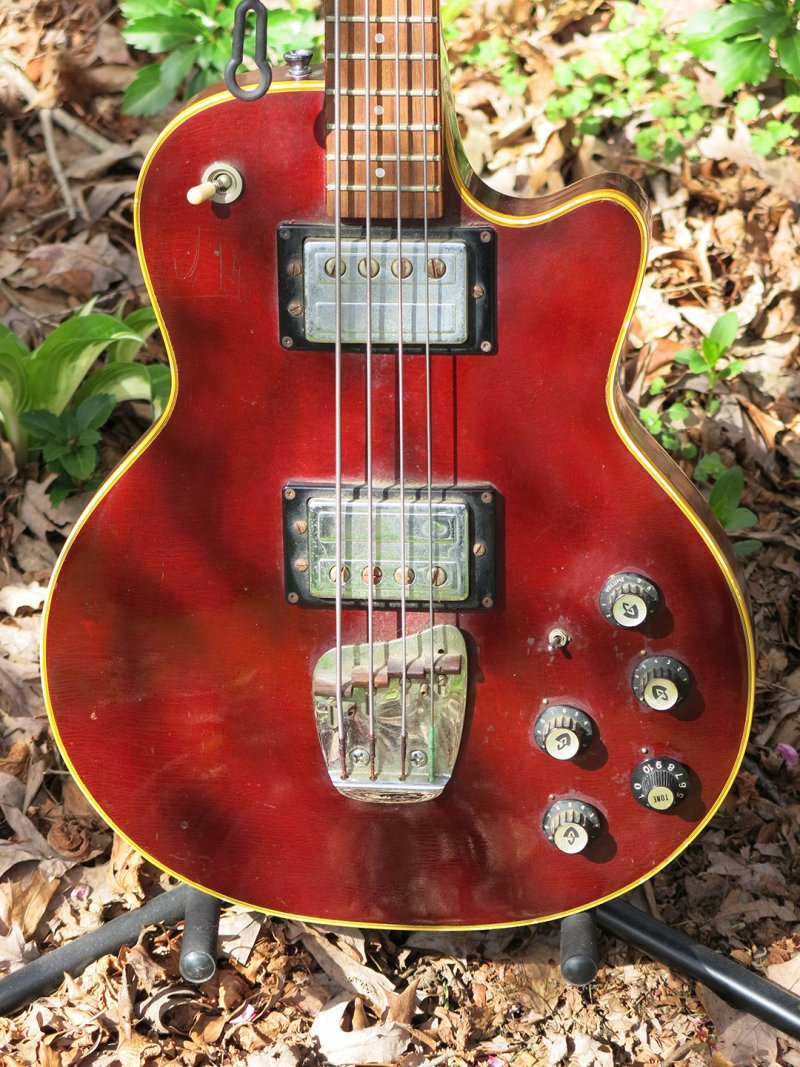
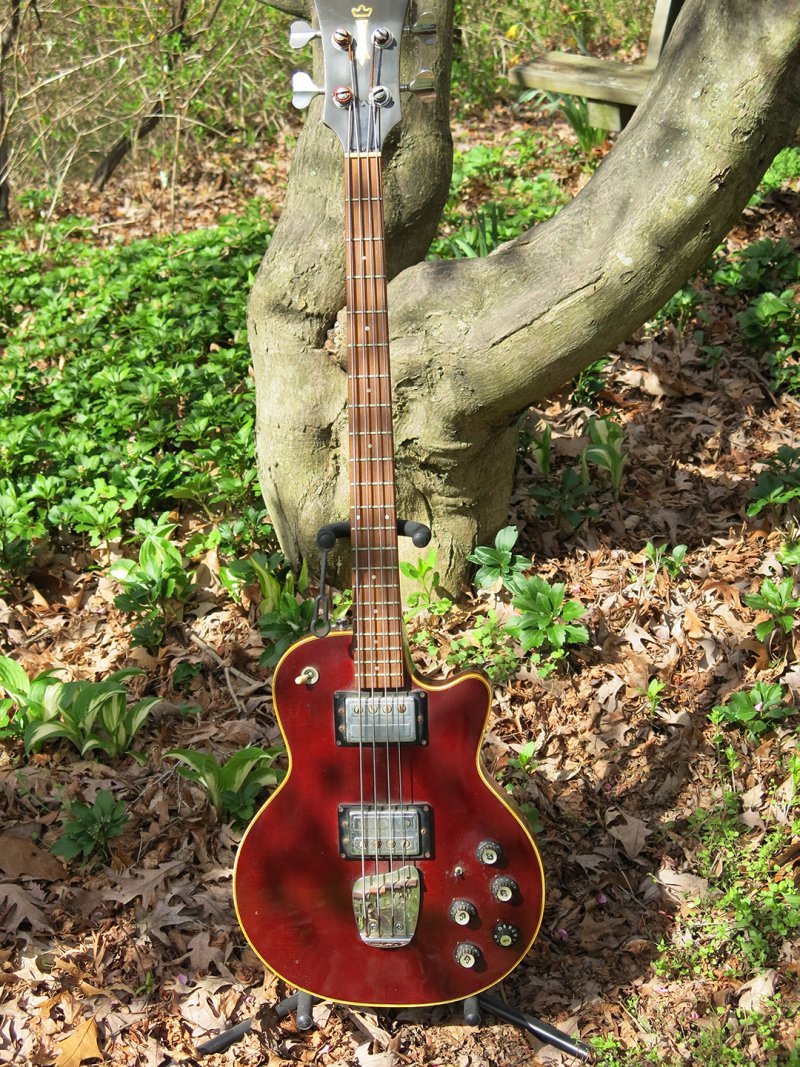
I'm no expert, but the crew here is, so have at it. Who knows, maybe I'll keep it and learn how to play bass? Lots more pics here:
Guild Bass Photos
Marty


